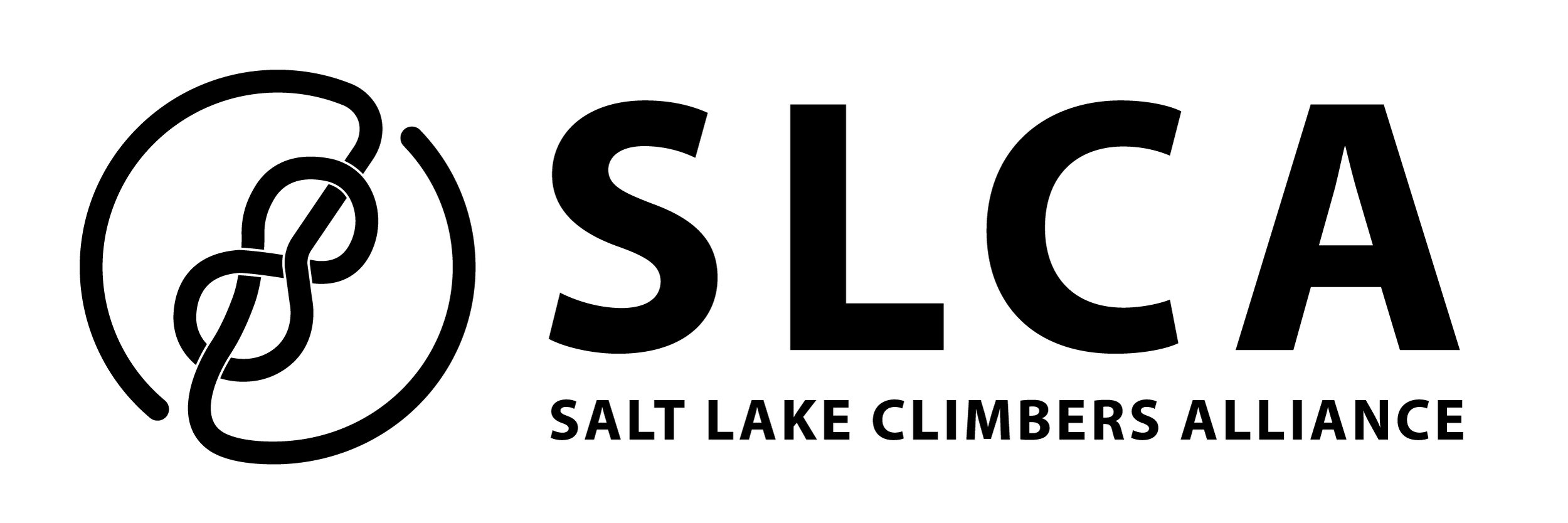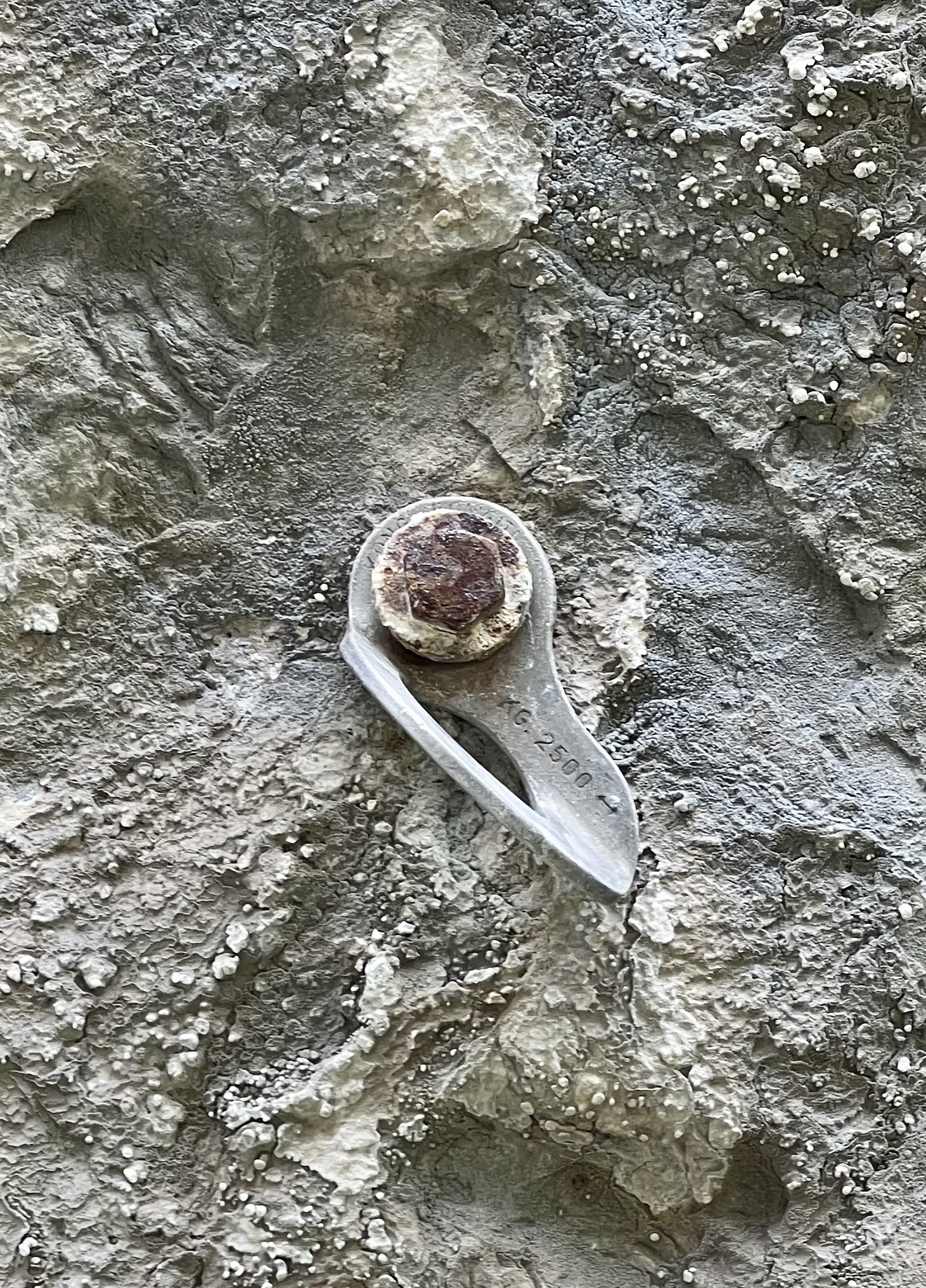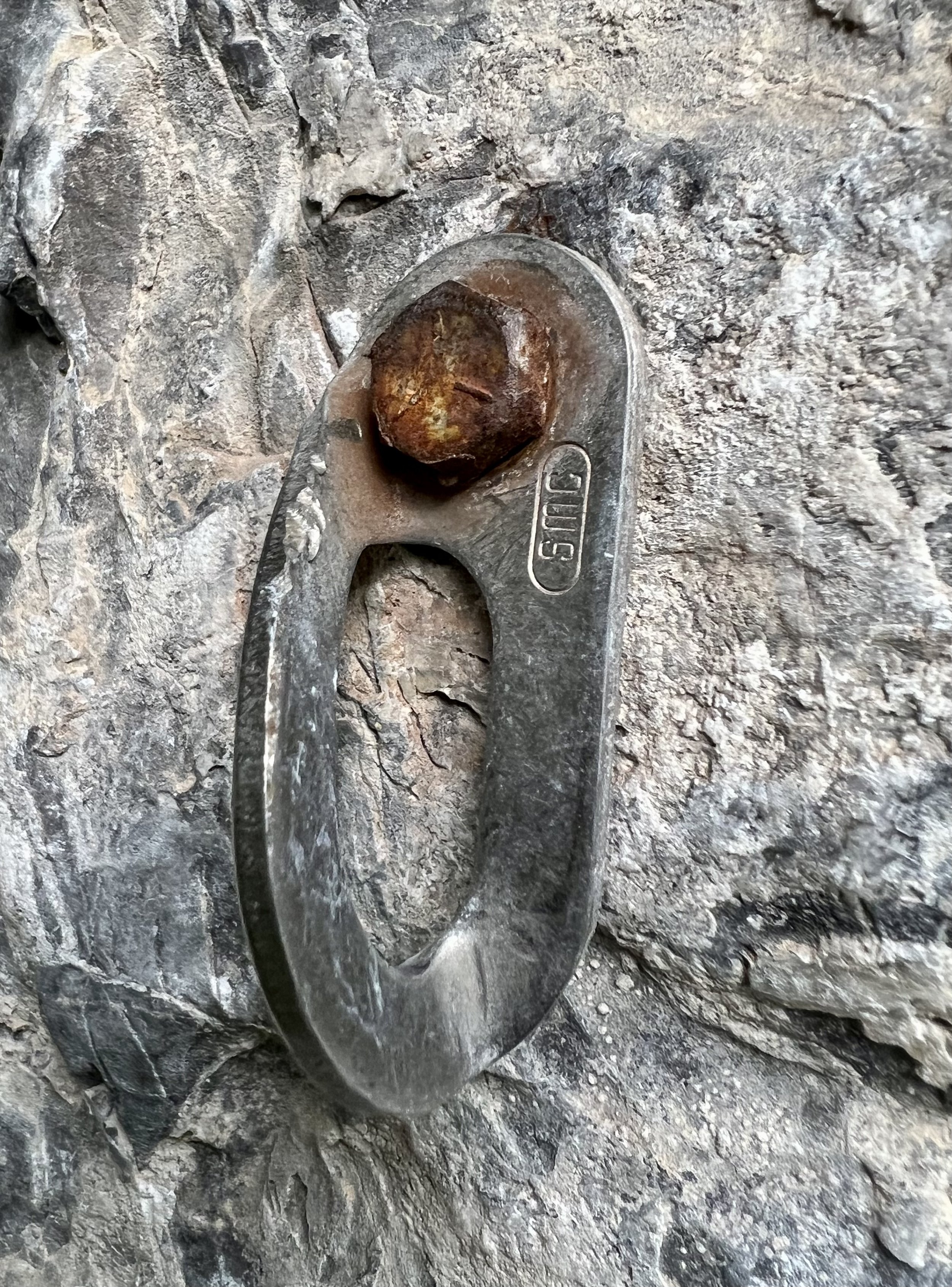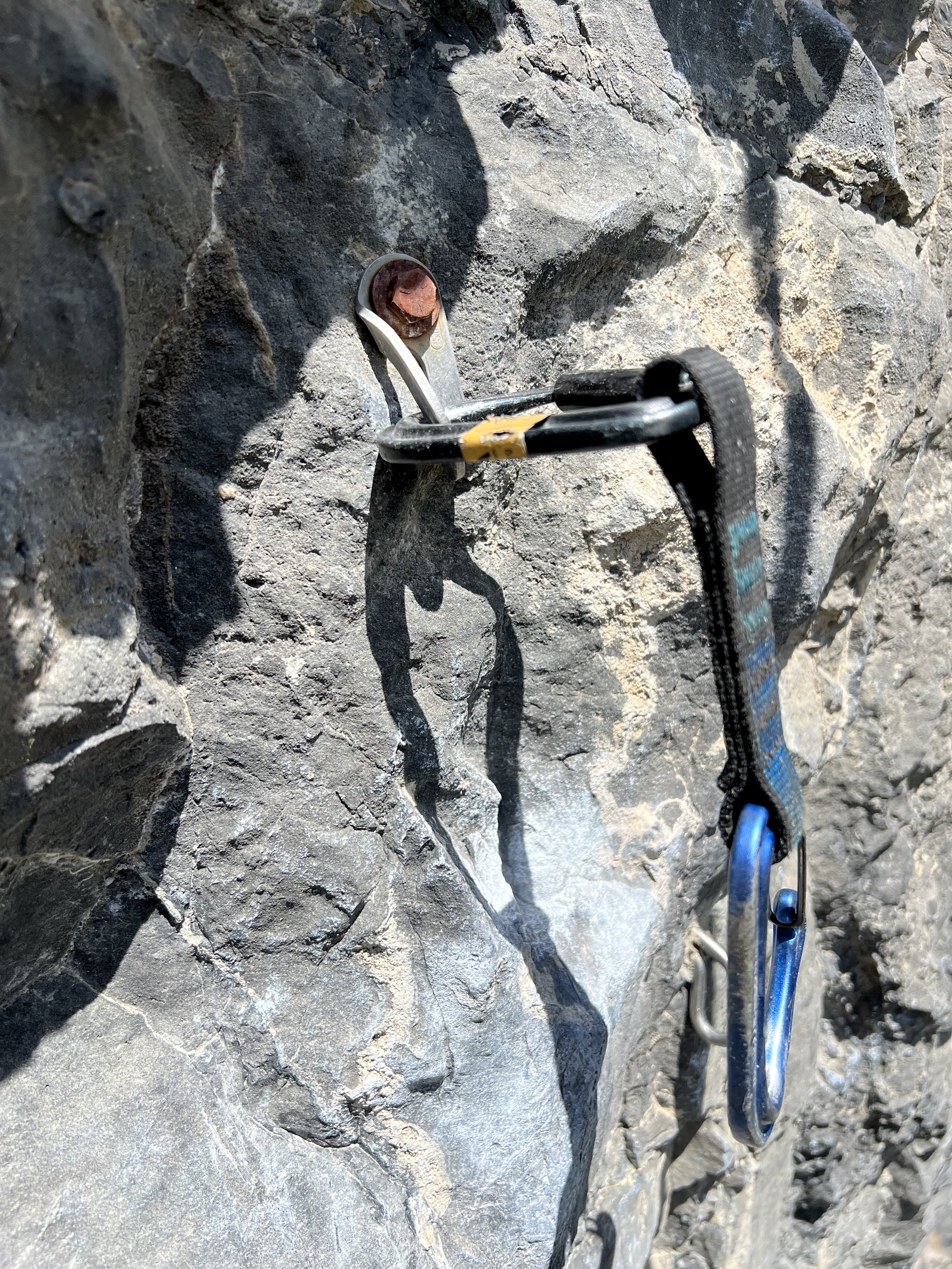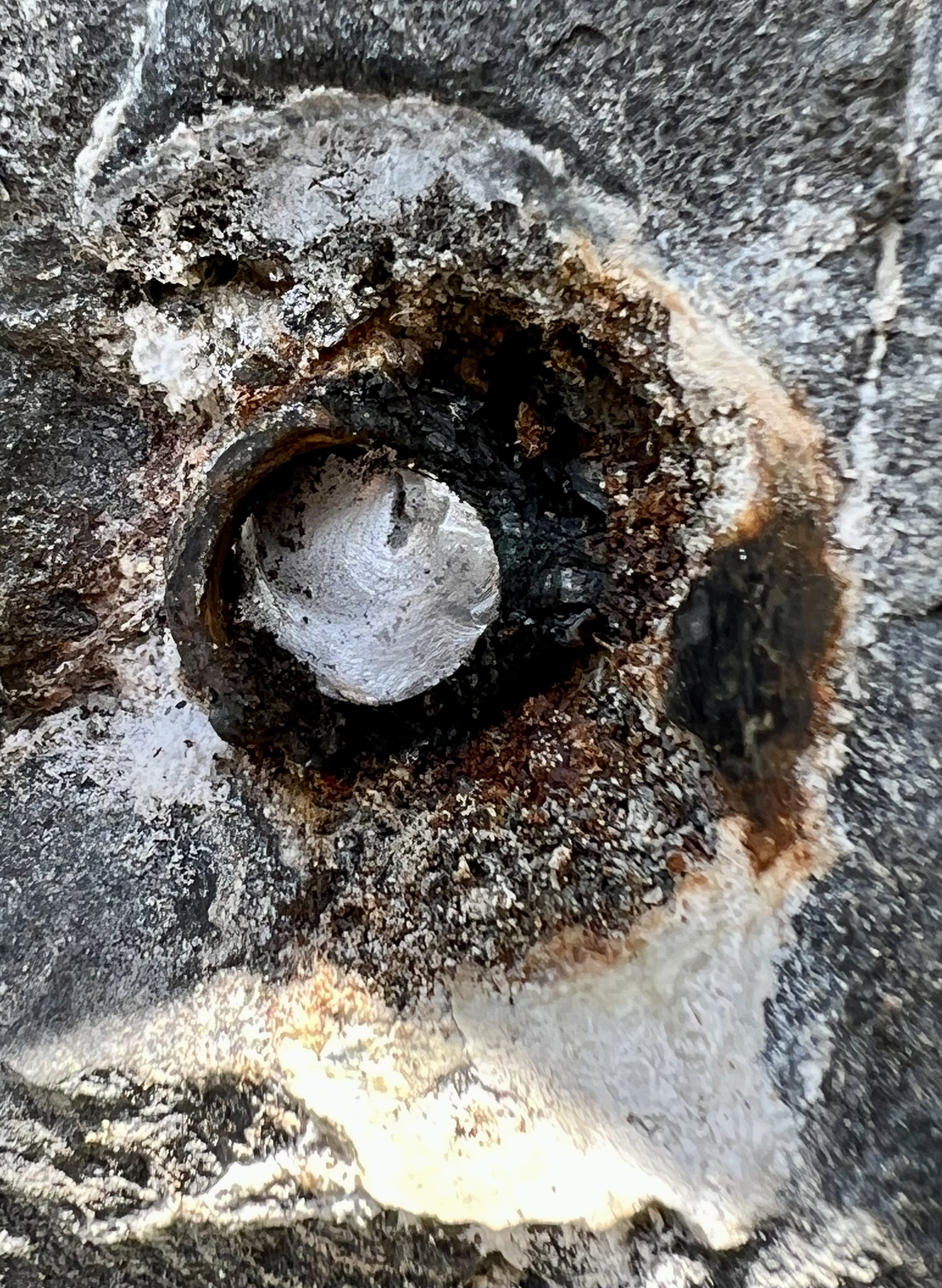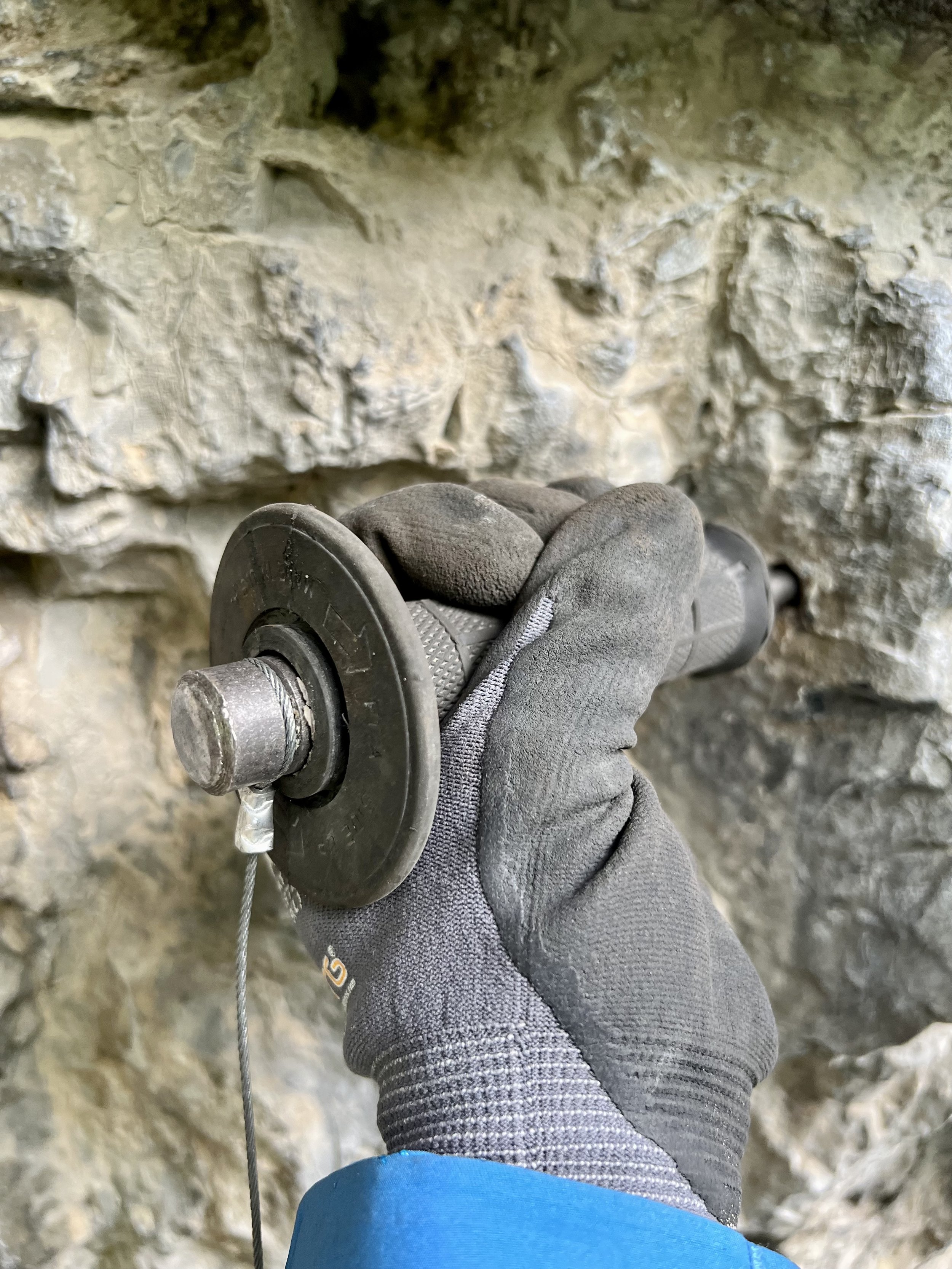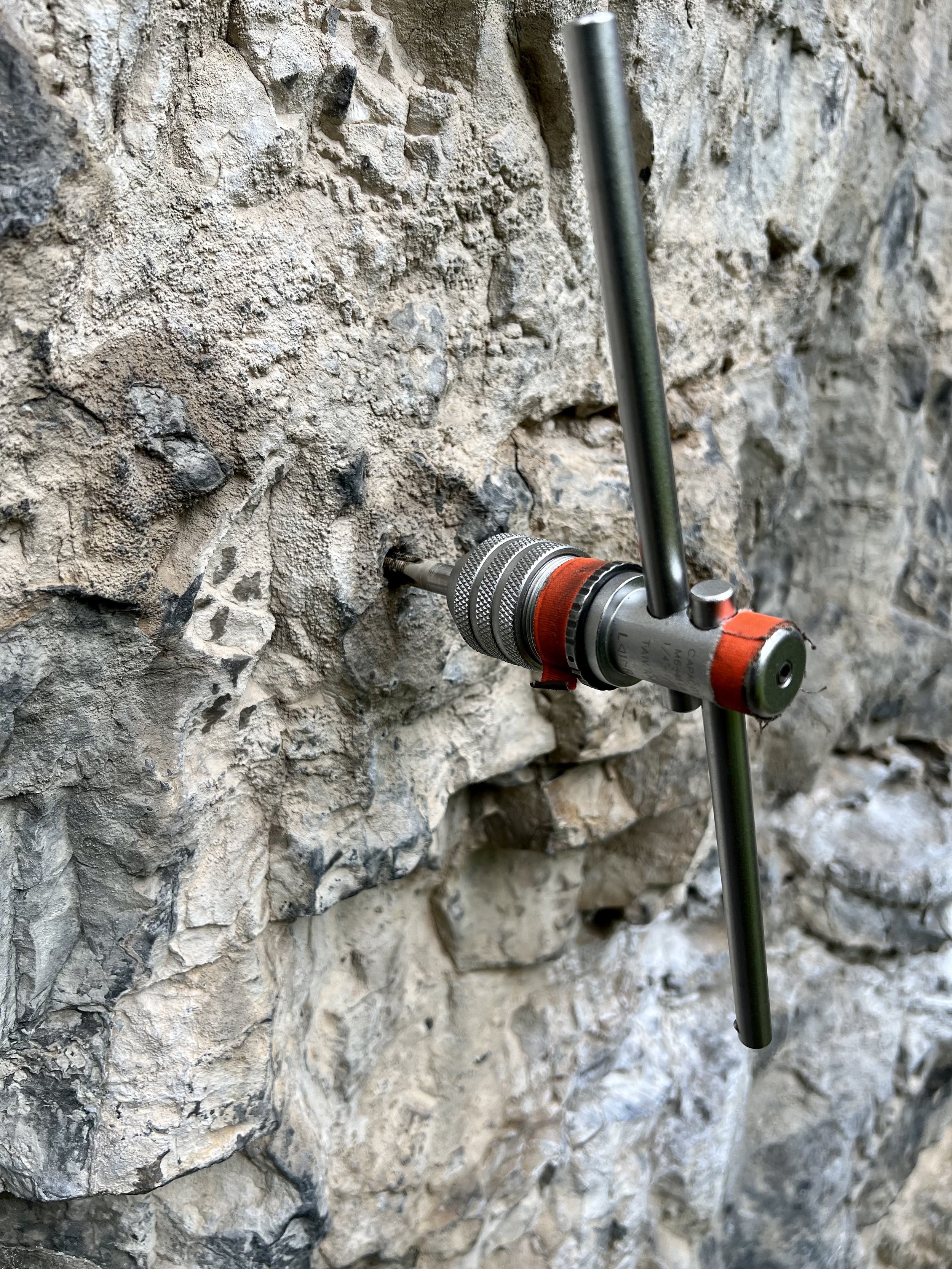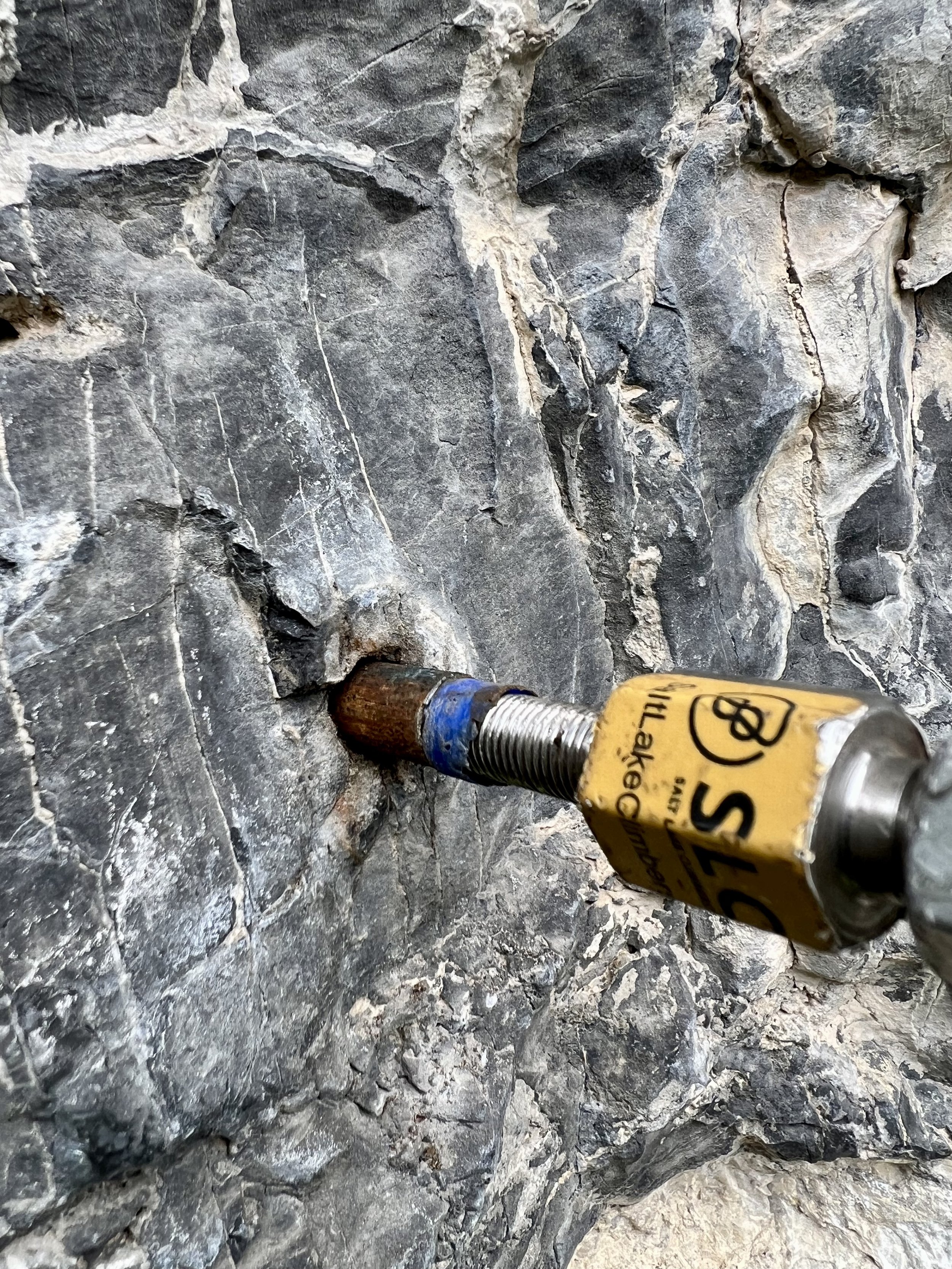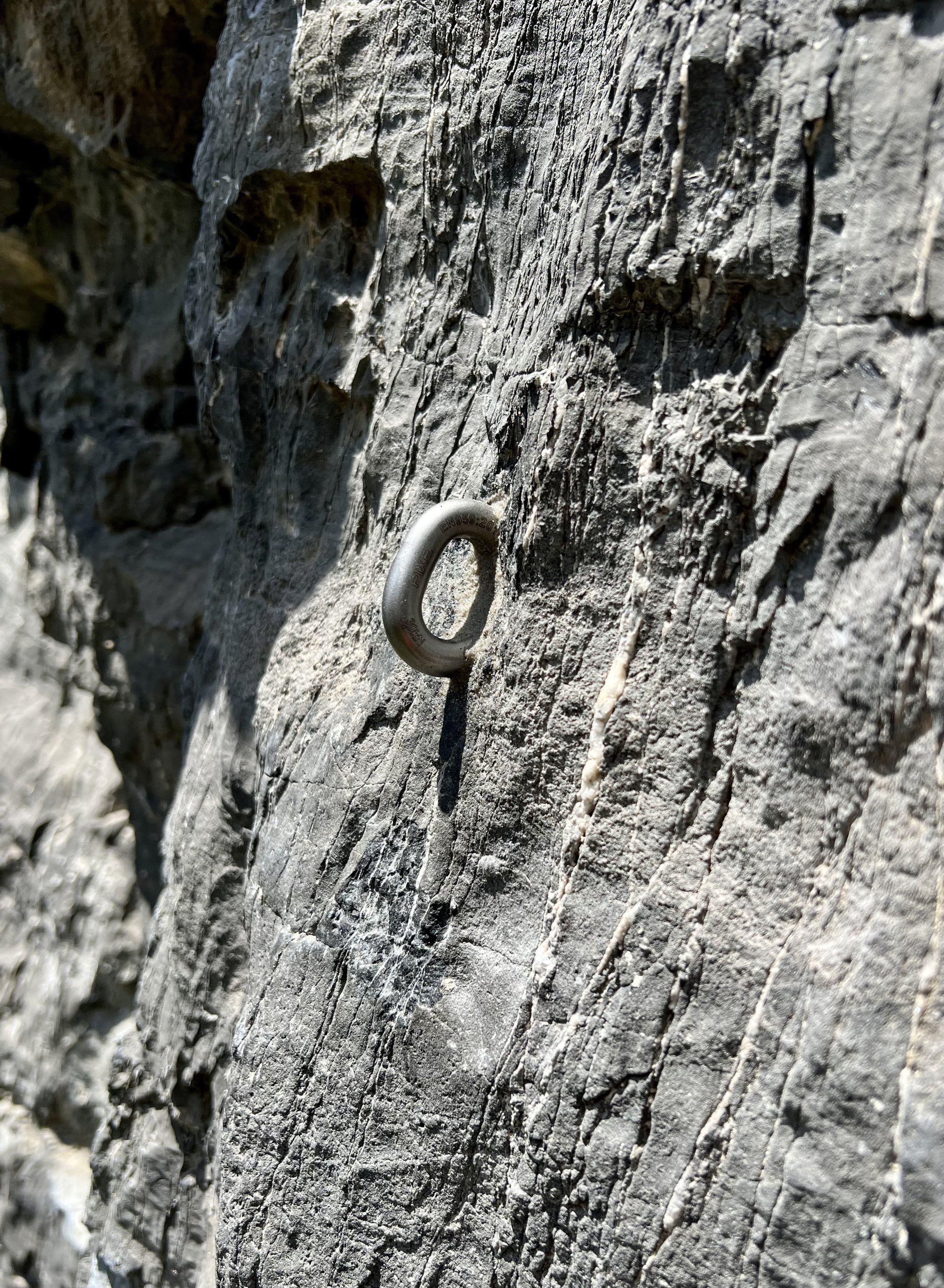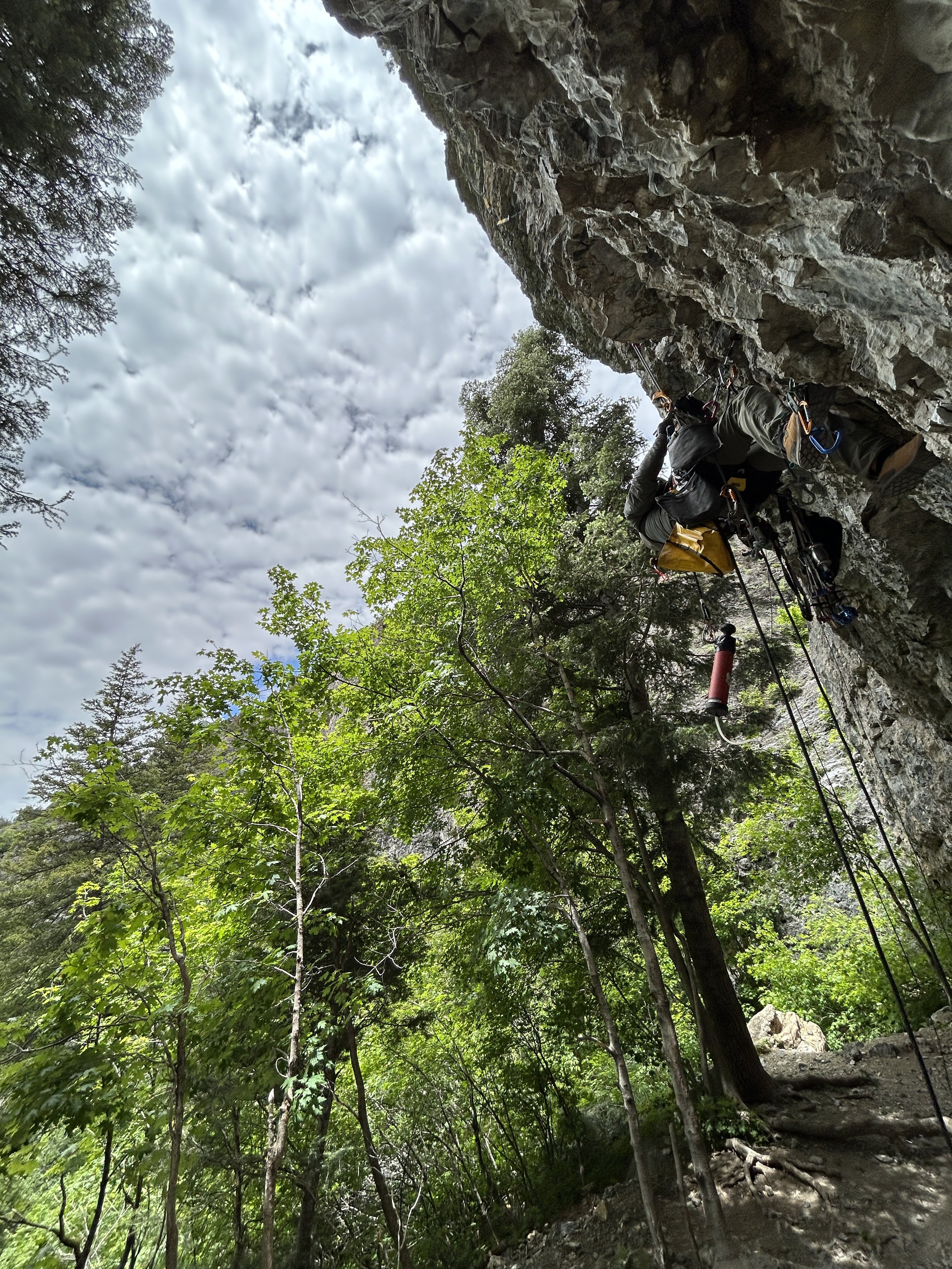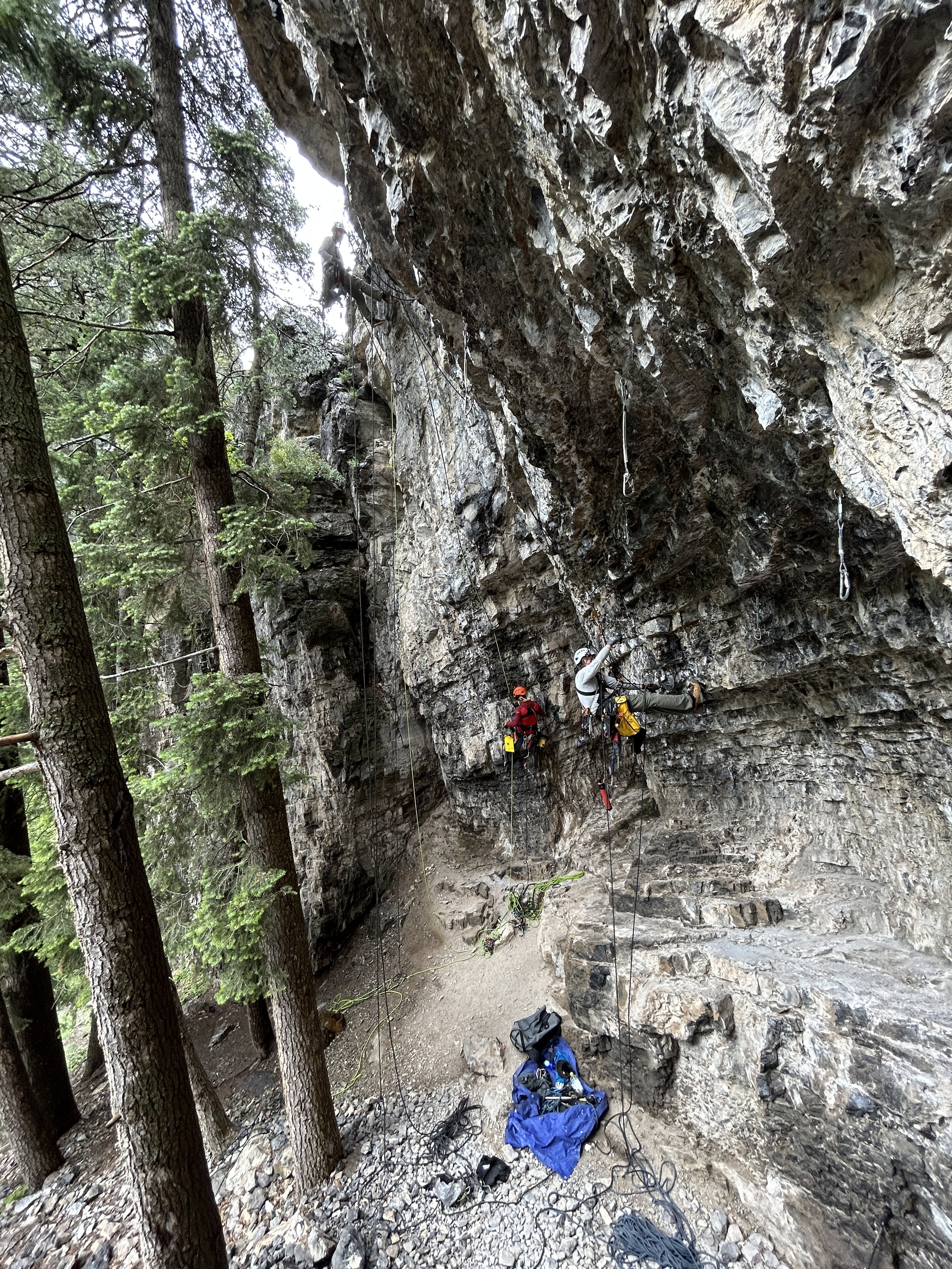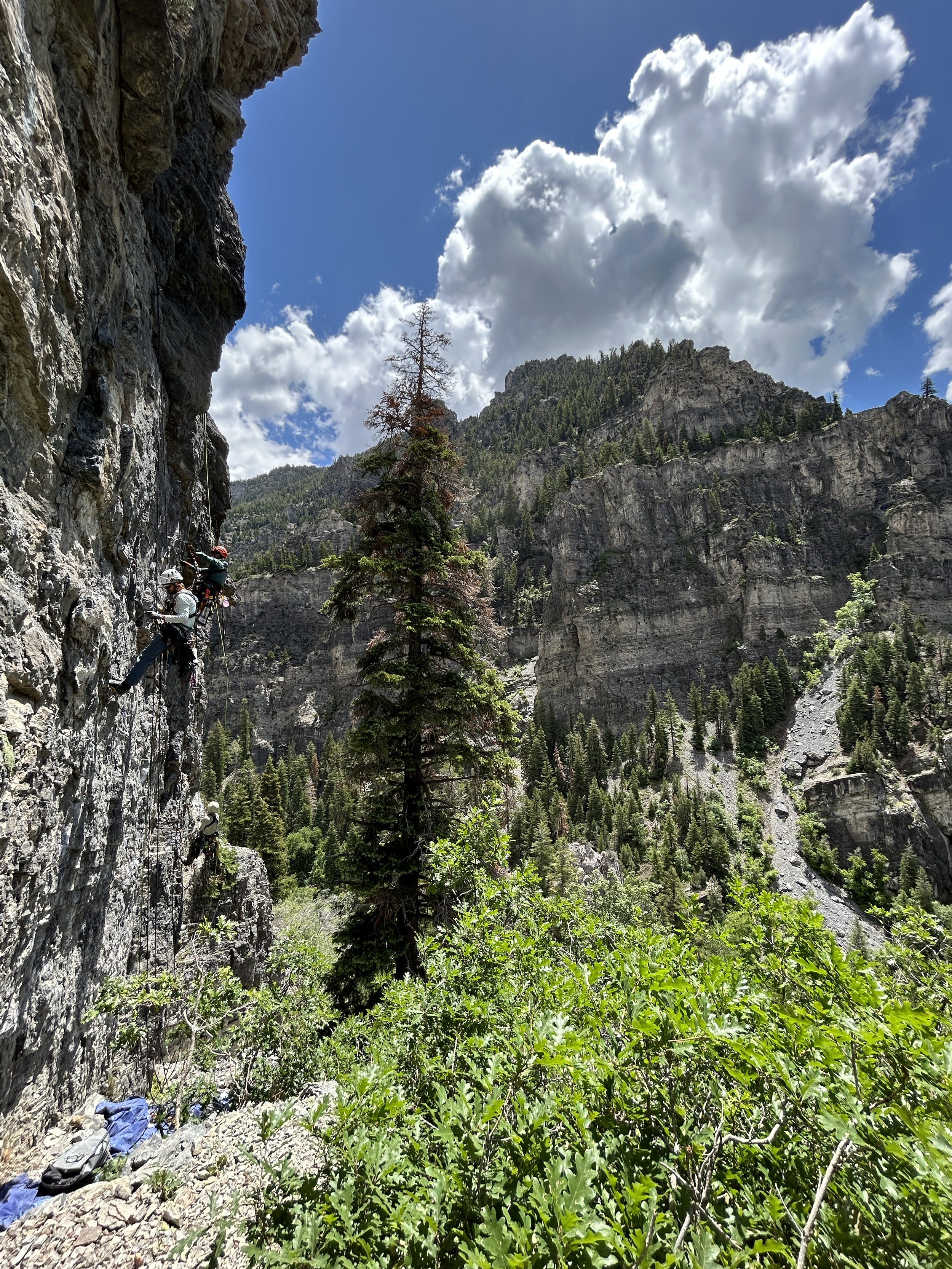American Fork Anchor Maintenance Recap
June 12/23 - 16/23
Hard Rock, Hell Area and The Watchtower
During the wet week of June 12-16, the Anchor Maintenance Crew finished up a few remaining routes in the Hard Rock area. Most of the routes on the West and South facing aspects have been replaced with Fixe stainless steel glue ins and upgraded with Fixe lower-off carabiners. In total: 17 routes and approximately 126 bolts were replaced within the last few weeks. If you are unfamiliar with the how to use these new lower offs, please visit the American Safe Climbing Association (ASCA) webpage on how to correctly use lower off anchors: here
After finishing up at the Hard Rock area, the crew moved west down the canyon to Hell and The Watchtower. With a day of rain, we hung out in the Hell area to work on the few remaining routes that have not been updated, including routes like Guillotine. Once the weather cleared, Friday was spent up at The Watchtower, around the corner from Hell.
The crew was able to replace, maintain and clean up some routes within the one day weather window. One aspect of the SLCA’s anchor program is to properly remove the old, existing hardware. We strive to go hole for hole, but sometimes this is not possible due to bolts snapping upon removal, original bolt placement in a less than ideal location, i.e. carabiner cross loading or poor rock around the original bolt. If we are unable to use the same hole, the anchor crew will spend the time patching and disguising the original hole. By doing this, a graveyard of old bolt holes will not be encountered by future climbers. By taking the time to patch, we hope that future generations will have the same experience as past generations.
Rock climbing is an inherently dangerous activity and we encourage anyone who participates to obtain the appropriate education and training in order to minimize accidents. We also encourage participants to consult resources including but not limited to guiding outfitters, SAR, Utah Avalanche Center, ranger stations, and weather reports. Nevertheless and although tragic, accidents can happen even when the participants have the proper training and have consulted authorities on conditions. Participants in outdoor climbing are assuming a risk, just as they do in skiing, mountain biking, kayaking, or other outdoor activities. Anchors once maintained by the SLCA are not guaranteed to be in the same state or condition as when they were maintained.
